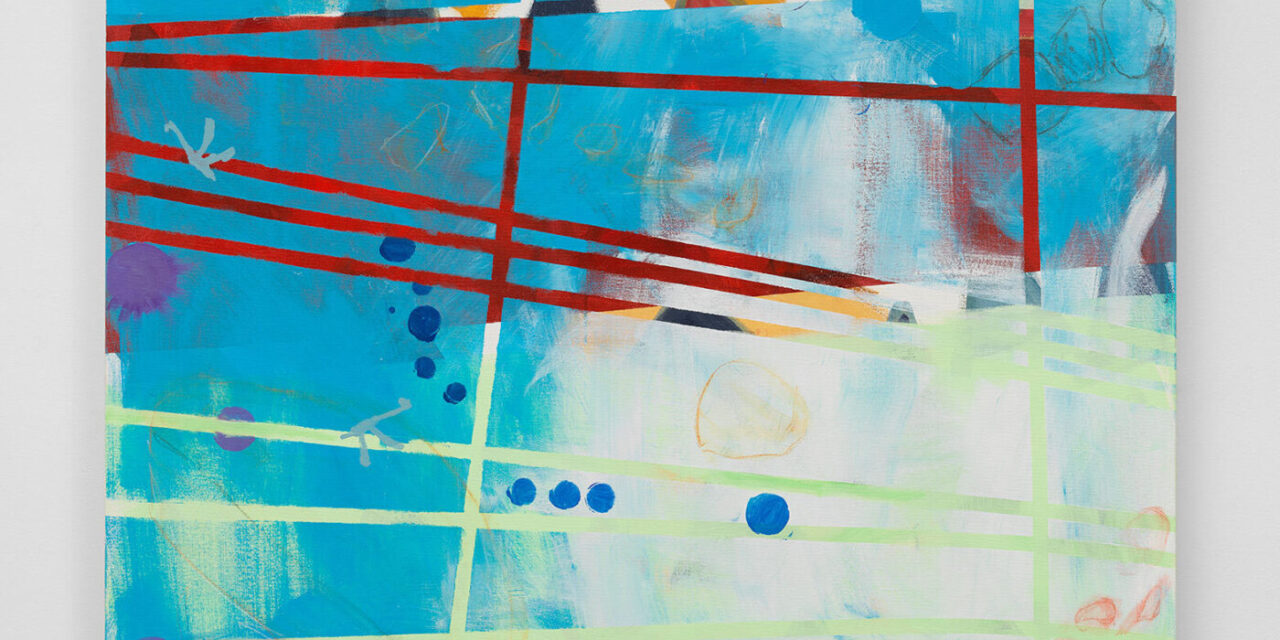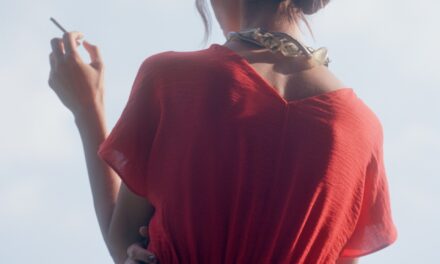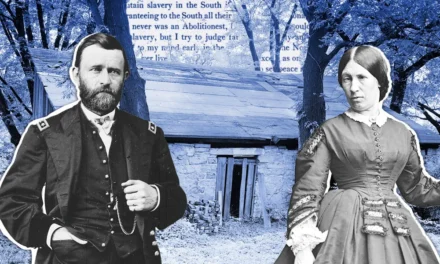
Cynthia Hawkins, Gwynfor’s Soup, or The Proximity of Matter # 7, 2022. Courtesy of Ortuzar Projects.
Those who visited the visually rich and intellectually generous exhibition Just Above Midtown: Changing Spaces at the Museum of Modern Art (MoMA) last fall/winter may have found themselves mesmerized by Cynthia Hawkins’s dynamic works on paper. Since the 1970s, Hawkins has been invested in an ongoing exploration of spatial relationships through abstract form and color. Finding inspiration in nature and science, Hawkins creates vibrant compositions imbued with movement. A recent recipient of the 2023 Helen Frankenthaler Award for Painting, Hawkins continues to explore the multifaceted potential of abstraction. I had the pleasure of speaking with Hawkins on the occasion of her first solo exhibition at Ortuzar Projects, titled Gwynfor’s Soup, or The Proximity of Matter.
—Ksenia M. Soboleva
Ksenia M. Soboleva You start your artist statement with the beautifully concise sentence: “My practice is abstraction.” I’m intrigued by this implication that your practice is not abstract painting but rather abstraction itself. I’m curious to hear how you first arrived at abstraction, and what are the ways in which you explore abstraction beyond painting and drawing?
Cynthia Hawkins Abstraction by its definition is broadly about ideas. My work is influenced by theory, science, nature, and evolutionary processes. Those processes are similar to jazz in particular and its ebb and flow, its conversational performance. In 1972, I completed my last figurative painting of several gymnasts on parallel bars, on mats, vaulting horses, and so on. I realized then that the painting was not about figures but about movement, direction, and space. Leaving the figure behind, I focused on drawing the equipment to see how those forms might evolve and become something different, specifically something other than their manufactured shapes, and be made useful in a new and different way. The pastel drawing of gymnastic equipment evolved to become geometric shapes, hence geometric abstraction. I experienced two critical encounters: first, Hans Hoffmann’s “push and pull” theory of color; second, Piet Mondrian’s early tree drawings that evolved to become intersecting lines, followed by geometric shapes. Abstraction is not merely taking things, ideas, and objects apart. For me, abstraction is about possibilities and the potential of the real to become something other. Abstraction offers me opportunities to remake the real. I find abstraction in literature, philosophy, and science; these fields allow me to make unlikely connections to engage with in my practice.

Cynthia Hawkins, Gwynfor’s Soup, or The Proximity of Matter # 1, 2022. Courtesy of Ortuzar Projects.
KMS Seeing your Blue Words (1976) in the Painting in New York: 1971–83 show at Karma Gallery back in the fall of 2022, I was instantly struck by the movement conveyed through shape and color as well as the notational quality reminiscent of a music score. It made me think of synesthesia, the phenomenon of seeing shapes and colors when hearing music. I’ve read that you use various scientific theories in your artistic practice, from mathematics to microbiology. Is your use of color informed by these theories, and is the conflation of senses something you’re ever thinking about?
CH I understand viewers referencing musical notes flying across the surface. However, those notations are based on early drawings that evolved into scientific notations and mathematical marks that reference algebra and trigonometry. They are concerned with moving the eye across the painting, such as where to enter and where to exit. Synesthesia is an extraordinary physiological condition that is intriguing; however, I have not made use of it. My use of color is based on Johannes Itten and Josef Albers; of course, this includes the paintings of Mondrian, Paul Klee, and others. I also researched eye perception and cone cells, which influenced some aspects of my painting. As with other types of information I acquired, I allowed myself to play with that information and use it differently.
KMS The abovementioned exhibition at Karma focused on women artists working in painting from 1971 to 1983. As marginalized as women artists were in the male-dominated art world, Black women artists were afforded even fewer opportunities in the pursuit of their artistic careers. I wonder whether you felt in dialogue throughout the ’70s and ’80s with the other women artists featured in this exhibition?
CH I was quite aware of and briefly met several of these artists, including Faith Ringgold, Dorothea Rockburne, Elizabeth Murray, Howardena Pindell, Joan Semmel, and Vivian Browne, among others. I think what’s more important and more meaningful is being conscious of their work. Seeing work in the exhibition by Pat Steir, Susan Rothenberg, Jennifer Bartlett, Nancy Graves, Cynthia Carlson, along with reading about the work and discussing it with colleagues, are what make it impactful and create that dialogue. They were part of my milieu, my artistic history. A few I knew well; a number of them were a good five-to-ten years older than me. But they were and are women working against the grain of gender discrimination, and they were activists in the fight for access.

Detail of Cynthia Hawkins, Gwynfor’s Soup, or The Proximity of Matter # 1, 2022. Courtesy of Ortuzar Projects.
KMS In contrast, the Just Above Midtown exhibition at MoMA highlighted the Black-owned gallery scene of New York City during this same period and featured two of your works: Moving Box (1975) and Heirog Inner Marks #1 (1974). Can you talk about your experience being part of this scene? And what was it like to revisit it at MoMA?
CH I was one of those artists who visited the 57th Street galleries and downtown almost every week. The three galleries operated by African Americans that I exhibited at and where I attended various artist support meetings were Kenkeleba House, Just Above Midtown Gallery, and Cinque Gallery. These exhibition sites were founded by artists, and as a result they were welcoming. And because we—especially abstract artists—were small in number, there was always someone who knew your work even if you weren’t friends. I often lament that I didn’t meet more of the earlier Black artists, like Palmer Hayden, who I discovered when I taught African American art history. However, in the 1970s I can say I attended the Whitney Museum protests among whose leaders were Benny Andrews and Cliff Joseph, standing with Vivian Browne, Emma Amos, and others.
Attending Just Above Midtown Gallery at the Museum of Modern Art was exhilarating, absolutely. It was a reunion; it was historic! It was wonderful to not only see artists I haven’t spoken to in years. To see the work created in those years by so, so many incredibly talented people was frankly inspiring. And to witness again Linda Goode Bryant’s artistic largesse in her curatorial choices was, I think, itself creative.

Cynthia Hawkins, Gwynfor’s Soup, or The Proximity of Matter # 8, 2022. Courtesy of Ortuzar Projects.
KMS I’m so intrigued by the exhibition title Gwynfor’s Soup, or the Proximity of Matter. It sounds like some mysterious Celtic fairytale. How did you arrive at the title?
CH Occasionally I come across a photograph of, say, a boulder that excites my eye. In this instance a relative in Wales posted a photograph on Facebook, and to me it was an orange square with many odd, small shapes in it or on it. I found it incredible. I wrote to Gwynfor saying that I am going to make some paintings based on it! His response: “What? It’s a bowl of soup.” That didn’t matter; I was enthralled with it. I then came across an old drawing with a red-orange background and shapes drawn with ink over the surface, and it had a title, The Proximity of Matter. I would call that kismet.
KMS In this new body of work on view at Ortuzar Projects, there is a very palpable activation of space in that the shapes appear three-dimensional and float somewhere between the canvas and the viewer. Were you working through any particular ideas in relation to space?
CH In various bodies of work from the mid-1970s, and I would say through to 1985, I was concerned with spatial depth. I wanted to avoid what I thought was characteristic of abstraction generally. Around 1975 or so, I used color to create depth; in the ’80s, working with pastels again I situated the objects in space, outer space, as if free-floating and passing through the cosmos. Somehow, these large forms that are dense with color are simultaneously weightless. I require my work to have as much three-dimensionality as possible, and I achieve that by way of placement, composition, and the way I work with color.
Cynthia Hawkins: Gwynfor’s Soup, or the Proximity of Matter is on view at Ortuzar Projects in New York City until August 12.





